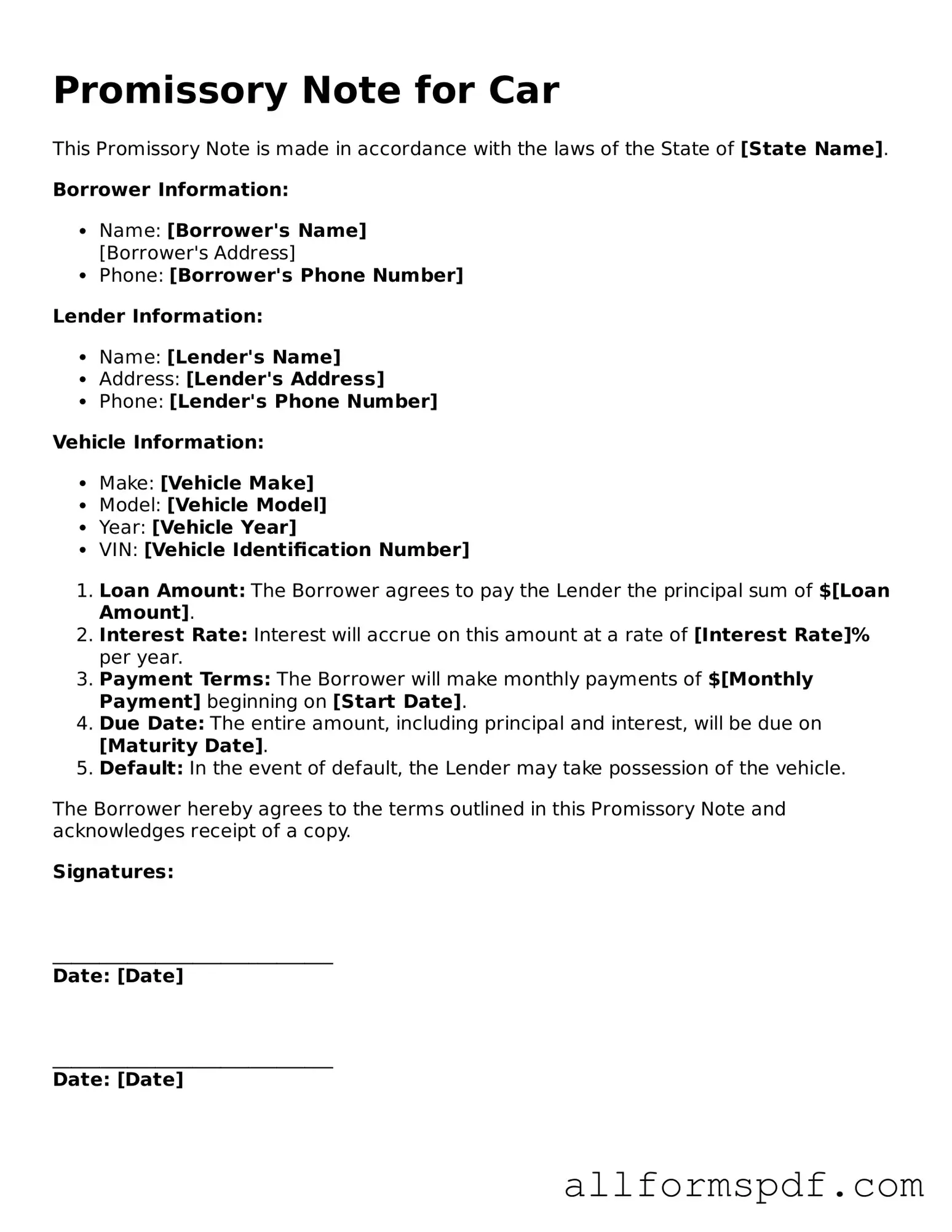Printable Promissory Note for a Car Form
A Promissory Note for a Car is a legal document that outlines the borrower's promise to repay a loan used to purchase a vehicle. This form serves as a written record of the loan terms, including the amount borrowed, interest rate, and repayment schedule. By using this document, both the lender and borrower can clearly understand their rights and responsibilities throughout the loan period.
Create My Promissory Note for a Car Now
